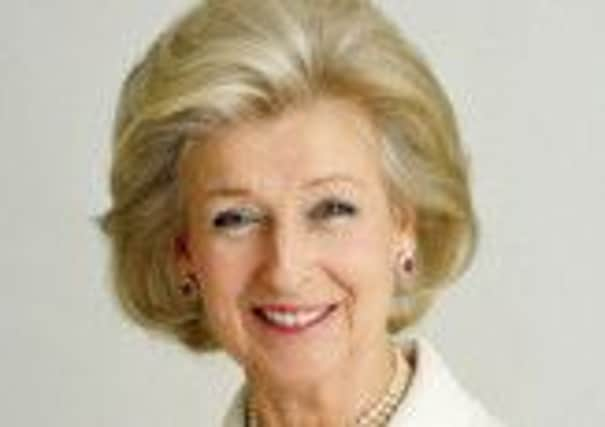Following in right royal footsteps


For on December 11, 1913, Queen Alexandra, after whom Princess Alexandra was named, visited what was then Black Moss Mansion and is now Ferrari’s Country House Hotel.
Princess Alexandra is visiting Ferrari’s on February 7 prior to a charity lunch and will plant a horse chestnut tree in the grounds – just as Queen Alexandra did a century ago.
Advertisement
Hide AdAdvertisement
Hide AdPrincess Alexandra, the Honourable Lady Ogilvy, is the youngest granddaughter of King George V and Queen Mary and is 44th in line to the throne.


She will attend a pre-lunch reception at Ferrari’s for an event which is raising funds for the Alexandra Rose Charity, the North-West Air Ambulance, Lancashire First Responders, Longridge Community Hospital and Great Eccleston Cancer Research.
A spokesman for Ferrari’s said they had known about Queen Alexandra’s visit, but it was not until someone recently gave them a local history book containing The Guardian’s account of the visit, that they realised it took place 100 years ago.
Also, as they looked into the visit, they discovered that Queen Alexandra was a supporter of medical charities and had launched the Alexandra Rose Charity.
Advertisement
Hide AdAdvertisement
Hide Ad“Susan (Ferrari) thought it would be a good idea to celebrate the visit and have some sort of charity day. We then found out that Princess Alexandra was the patron of the Alexandra Rose Charity, so we thought we should invite her,” said the spokesman.
He said they had written to Buckingham Palace and received back “a very nice letter”, saying that Princess Alexandra was not able to attend on that date.
“However, a few weeks later we received another letter saying the princess was in Lancashire on February 7 and asking whether that would that be convenient,” he added
The offer was accepted and planning began.
An account of Queen Alexandra’s visit to Black Moss, the then home of Captain the Hon. Algernon Francis Stanley, whose eldest brother was the 17th Earl of Derby, reads as follows.
Advertisement
Hide AdAdvertisement
Hide Ad“Queen Alexandra, widow of Edward VII, came to luncheon at Black Moss. She was spending the week with the Earl and Countess of Derby at Knowsley and motored over to Black Moss via Preston during the morning.
“The Royal party travelled in four cars....The Queen, formerly a Danish princess, was popular with the public. She was an energetic supporter of charities. The previous June her Alexandra Rose Day had been established to raise money for British hospitals. Thousands of cheering people lined the route, especially in Preston.
“At the entrance to Black Moss drive local people were gathered behind barriers. It was a bleak, windy winter’s day with drizzling rain. The onlookers, many having walked there, braved the elements for about three hours. All who could be spared from the farms and cottages in the area attended, and also the scholars from Thornley and Chipping schools, for whom a holiday had been declared.
“The royal party arrived at Black Moss at 1.35pm, and after luncheon an hour later the cars returned along the drive and pulled up immediately before passing out of the avenue on to the Longridge to Whitewell road.
Advertisement
Hide AdAdvertisement
Hide Ad“Two chestnut trees, each 14feet high, had been set on each side of the entrance and as a memento of her visit Queen Alexandra had consented to perform the formal ceremony of planting the tree on the west side.
“The first car drew up opposite a small platform extending from the roadway to the tree... Captain Stanley was the first to alight and then Her Majesty, who was dressed entirely in black, stepped on the platform to receive a rousing welcome from the country folk. Captain Stanley received from James Eccles, the estate bailiff, a lady’s steel garden spade, which he in turn handed to Her Majesty who deposited three spadefuls of fine earth at the base of the young chestnut. The spade was returned to estate bailiff as a souvenir.
“Returning to the car, Queen Alexandra repeatedly bowed in acknowledgement of the enthusiastic greeting of the crowd, and after shaking hands with Captain Stanley continued her journey to Houghton Tower.”
The bell ringers of Chipping Parish Church marked the occasion of Queen Alexandra’s visit and after “firing” the bells for sometime, a 720 bob minor, containing 18 bobs and two singles, was rung.
The ringers were R Kenyon, F Timbrell, J T Kenyon, John Seed, E Timbrell and conductor WTH Timbrell.
l For further information about February’s visit to Ferrari’s, call 01772 783148.